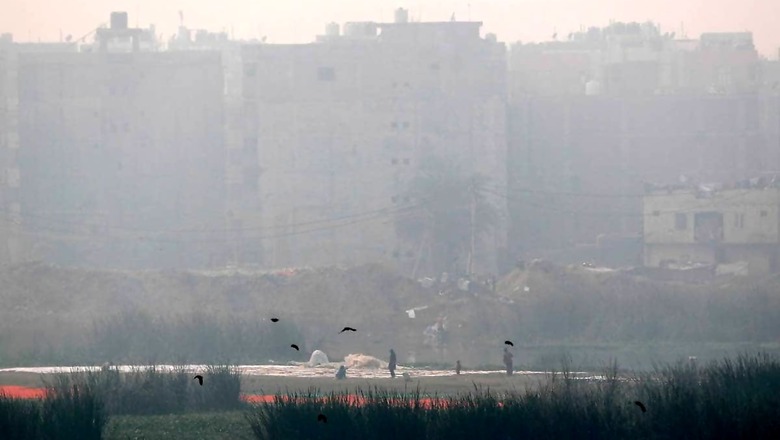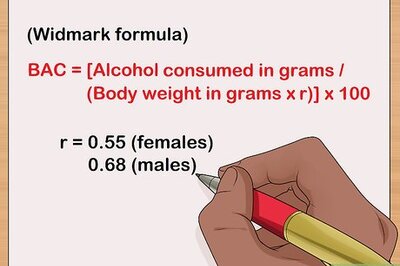
views
Delhi’s air quality remained “severe” for the second day on the trot on Wednesday amid slow wind speed and lowering temperature, prompting the CPCB to order closure of hot mix plants and stone crushers till January 2. No major improvement is predicted till December 26, said Kuldeep Srivastava, the head of the India Meteorological Department’s regional forecasting centre.
The city’s 24-hour average air quality index (AQI) was 433. It was 418 on Tuesday, 332 on Monday, 321 on Sunday and 290 on Saturday. Air pollution in the neighbouring cities of Faridabad (428), Ghaziabad (472), Greater Noida (476) and Noida (462) also remained in the “severe” zone.
An AQI between zero and 50 is considered “good”, 51 and 100 “satisfactory”, 101 and 200 “moderate”, 201 and 300 “poor”, 301 and 400 “very poor”, and 401 and 500 “severe”. Srivastava attributed thedip in the air quality to slow wind speed, low temperature, and high humidity due to a Western Disturbance.
Low temperature makes the air heavier, trapping pollutants close to the ground, he said. On Wednesday, the minimum temperature was 4 degrees Celsius and the maximum wind speed 8 kmph.
With the air quality persisting in the “severe” zone, the CPCB directed that hot mix plants and stone crushers will remain closed “all the time” till January 2. It also directed agencies concerned to increase the frequency of mechanised cleaning of roads and water sprinkling to control dust pollution.
Agencies must ensure strict compliance of court orders banning sale and use of firecrackers and strict action must be taken against violators of dust pollution control norms, it said. The central government’s Air Quality Early Warning System for Delhi said the city’s ventilation index – a product of mixing depth and average wind speed – was 2,500m2/s on Wednesday andis likely to be 3,000 m2/s on Thursday. Mixing depth is the vertical height in which pollutants are suspended in the air. It reduces on cold days with calm wind speed.
A ventilation index lower than 6,000 sqm/second, with the average wind speed less than 10 kmph, is unfavourable for dispersal of pollutants.
Read all the Latest News, Breaking News and Coronavirus News here


















Comments
0 comment